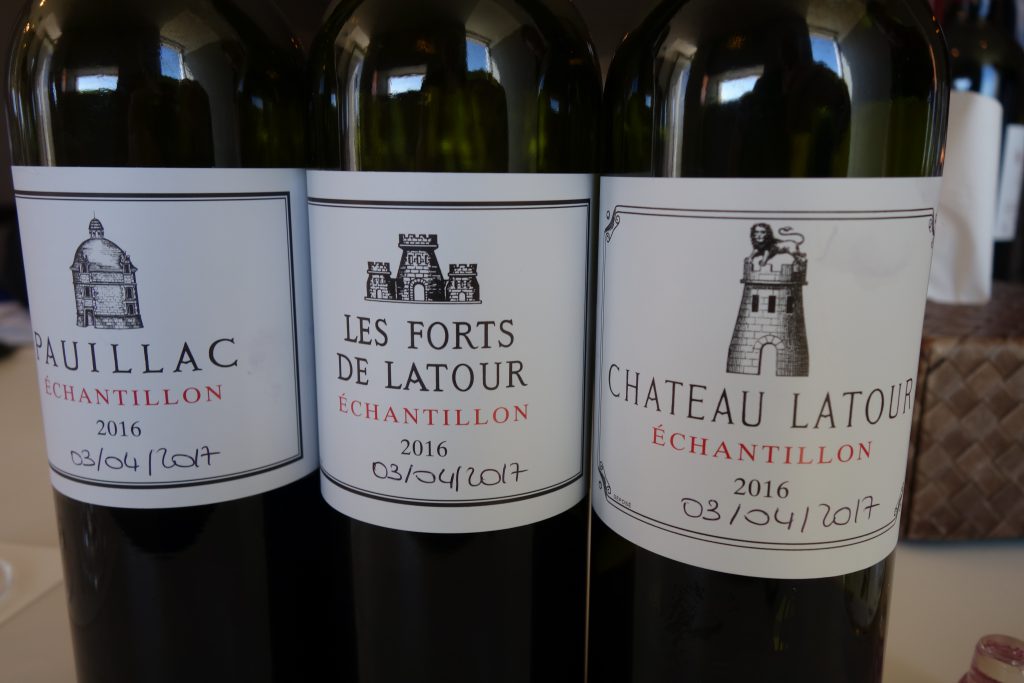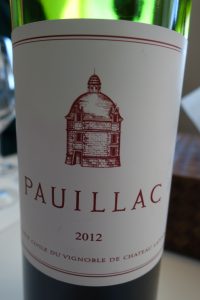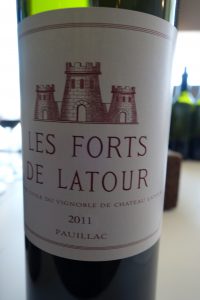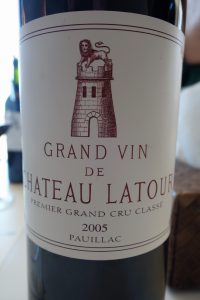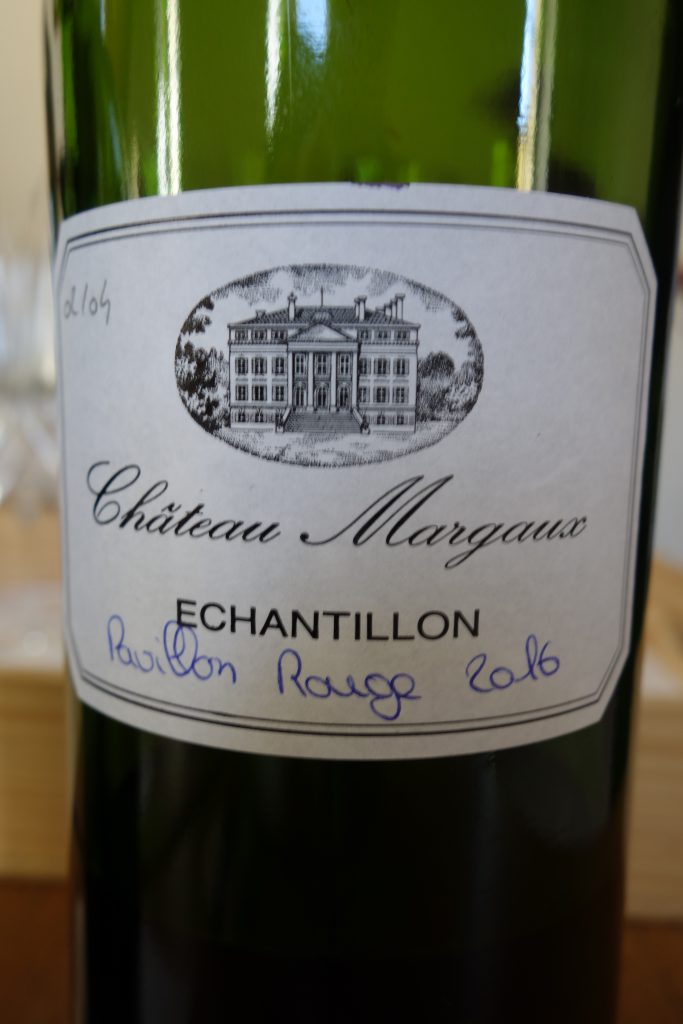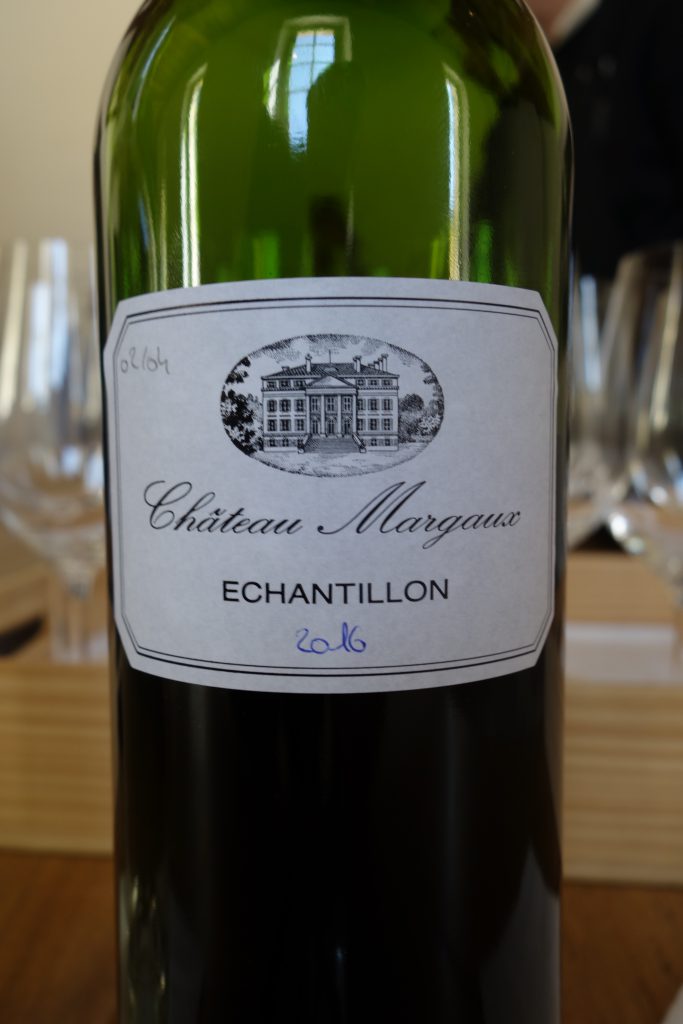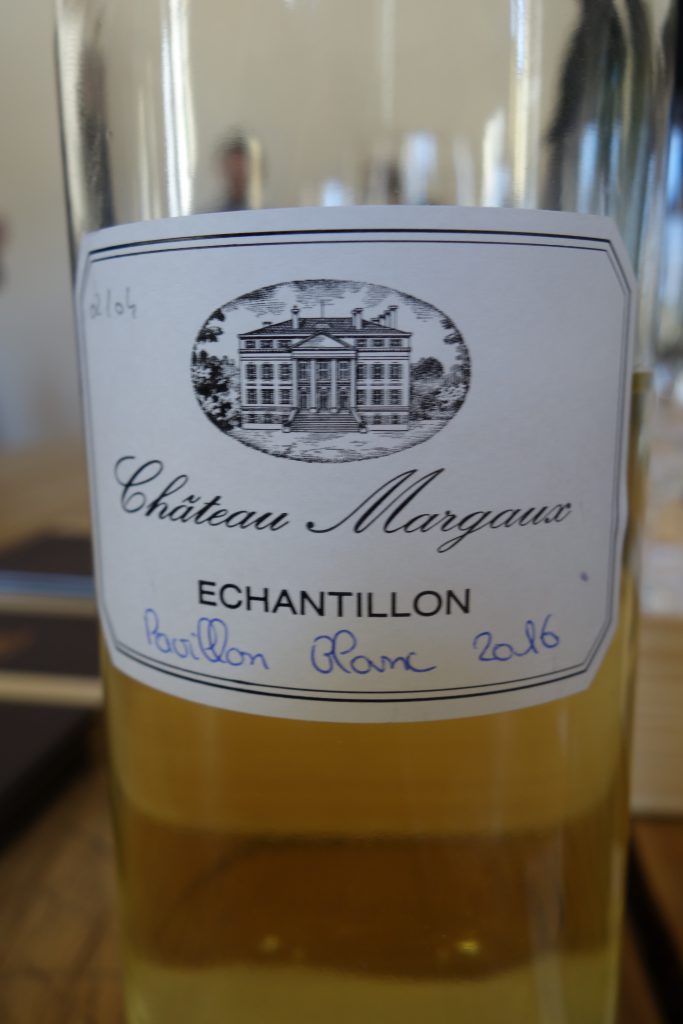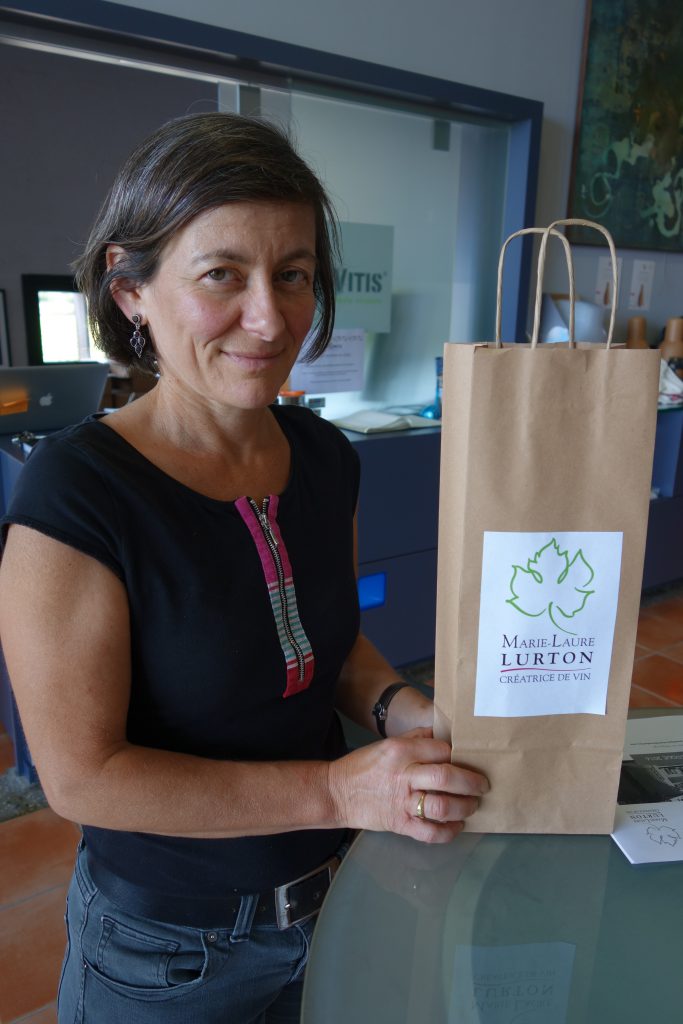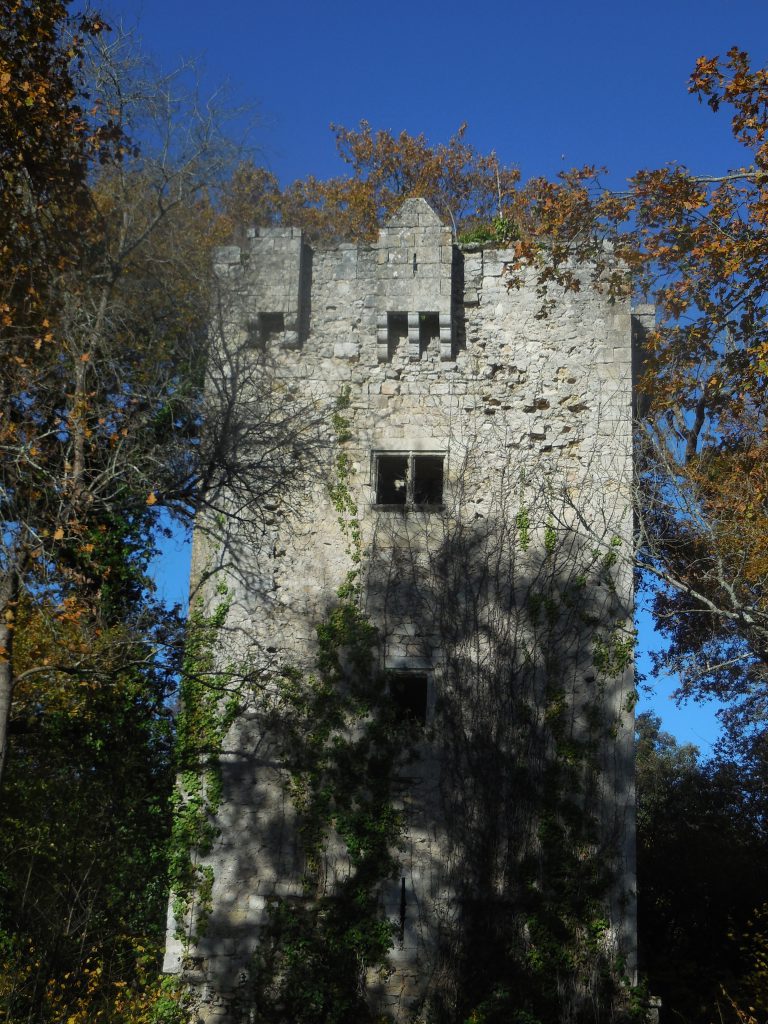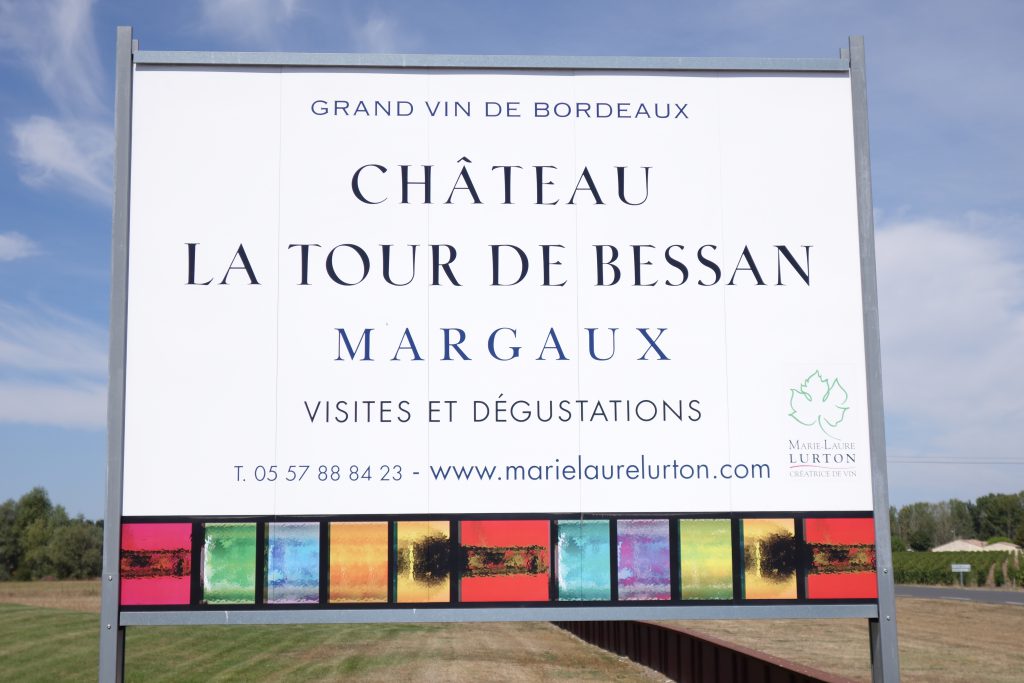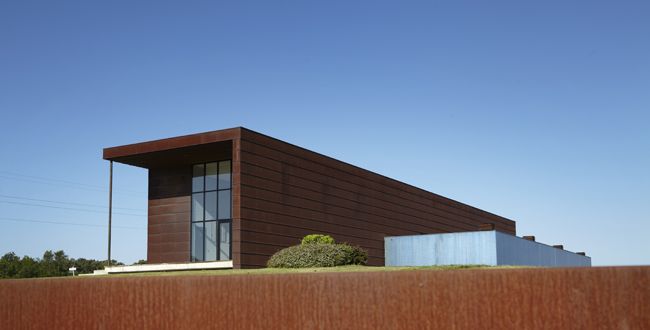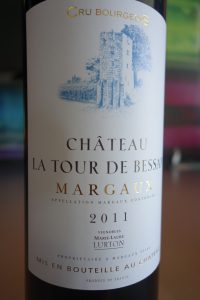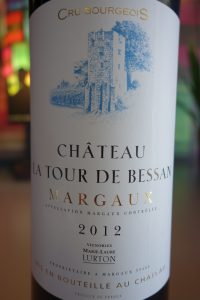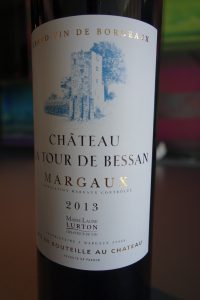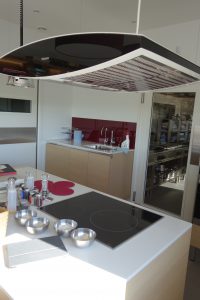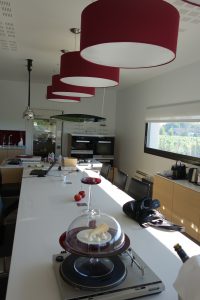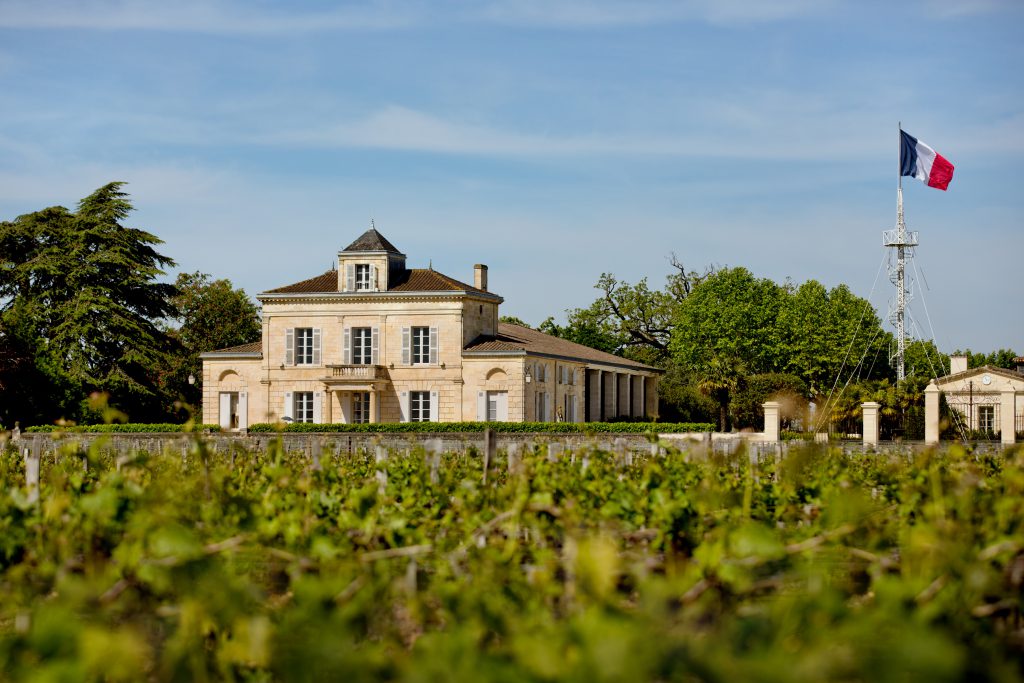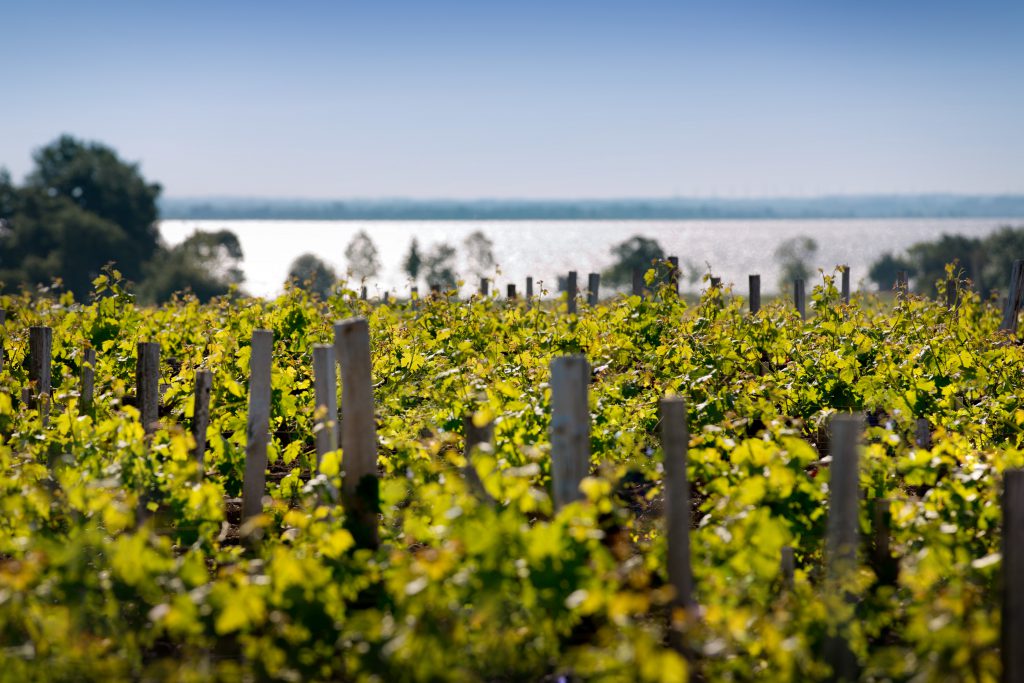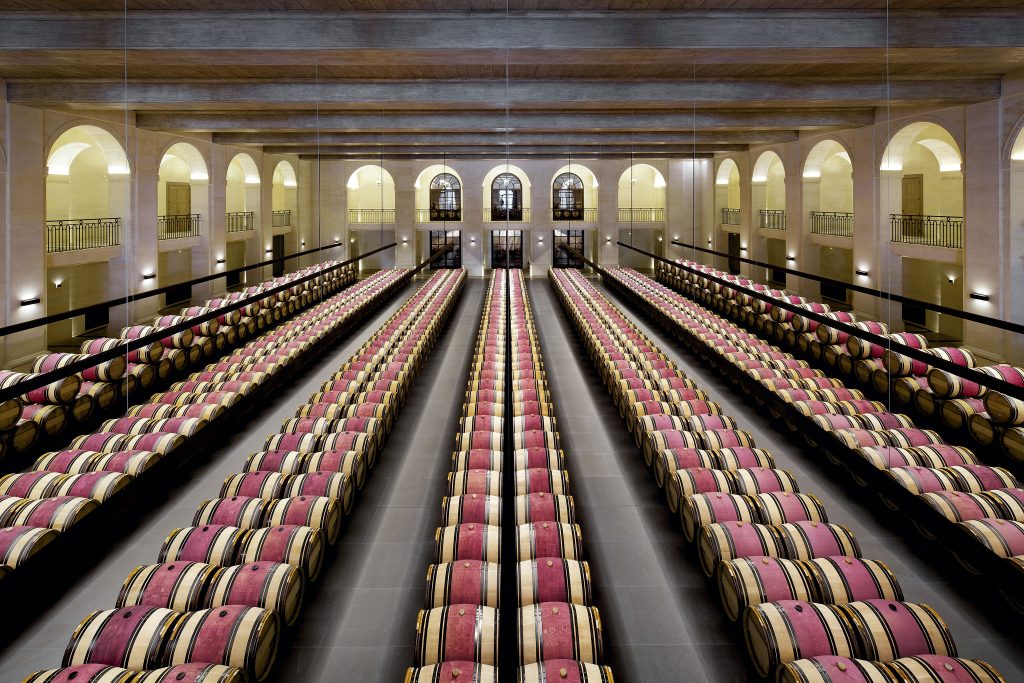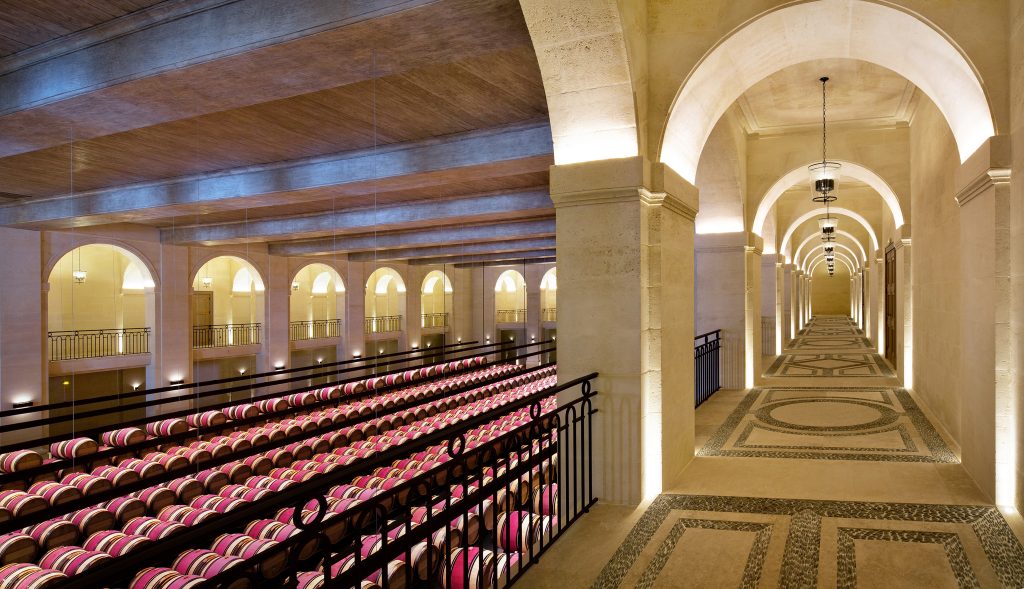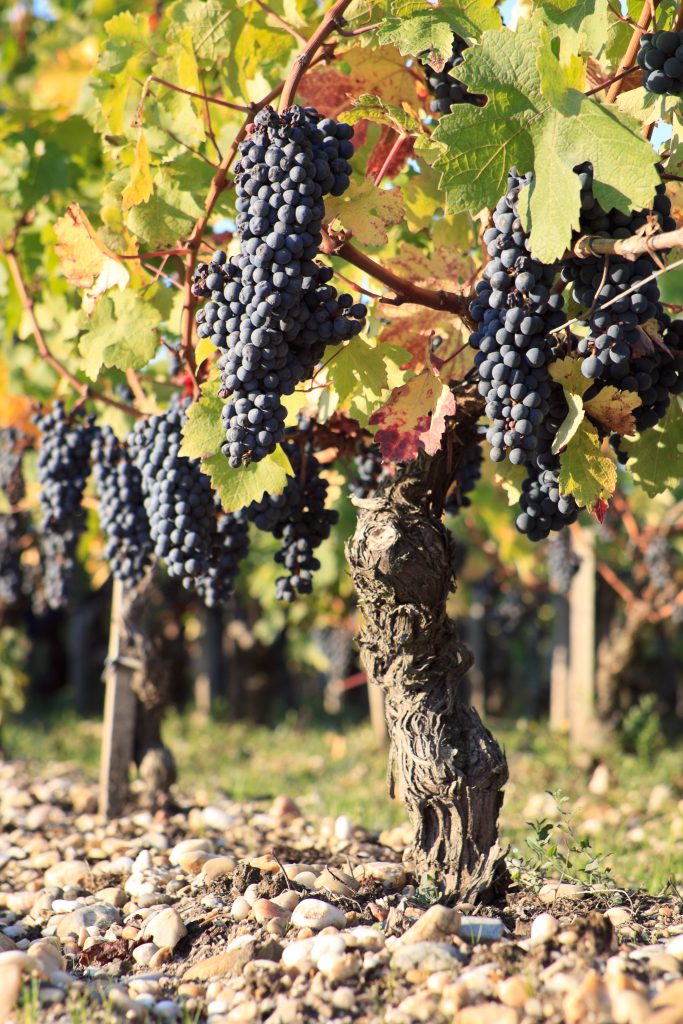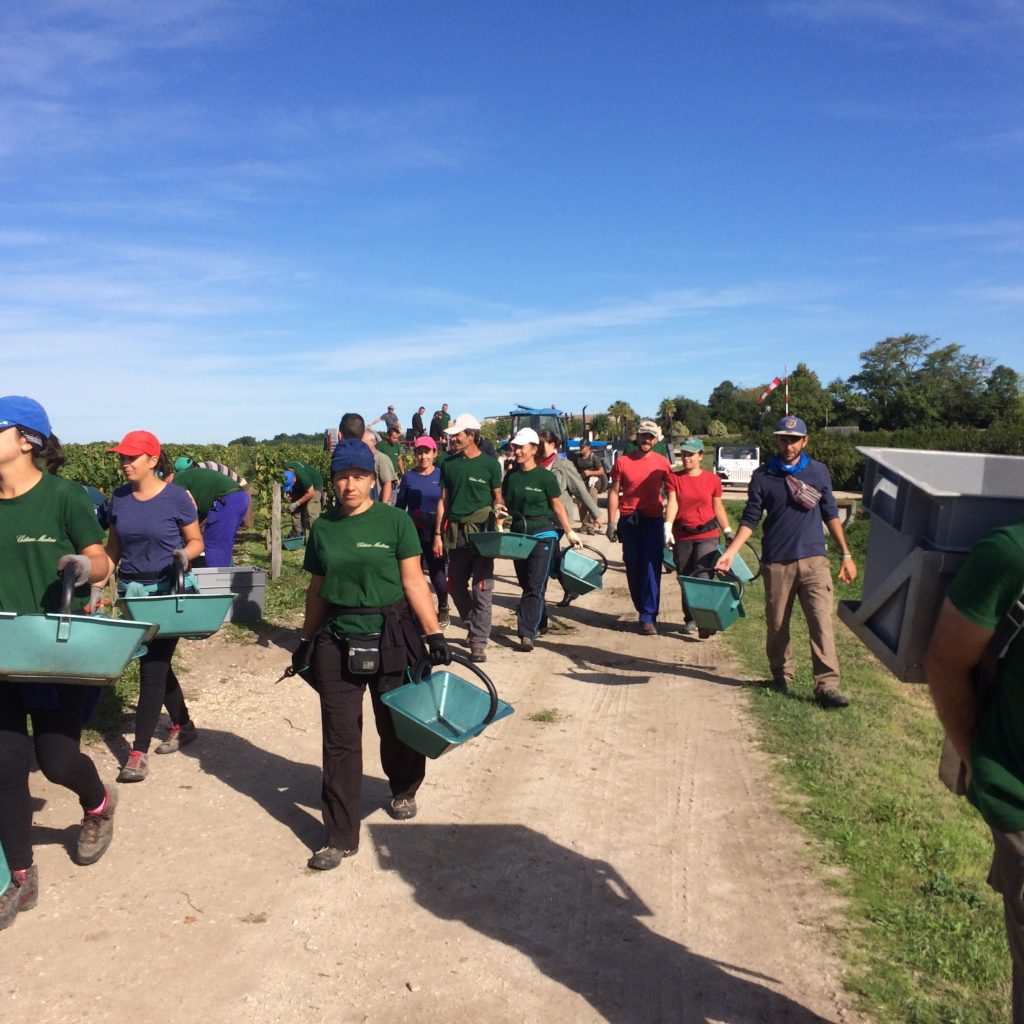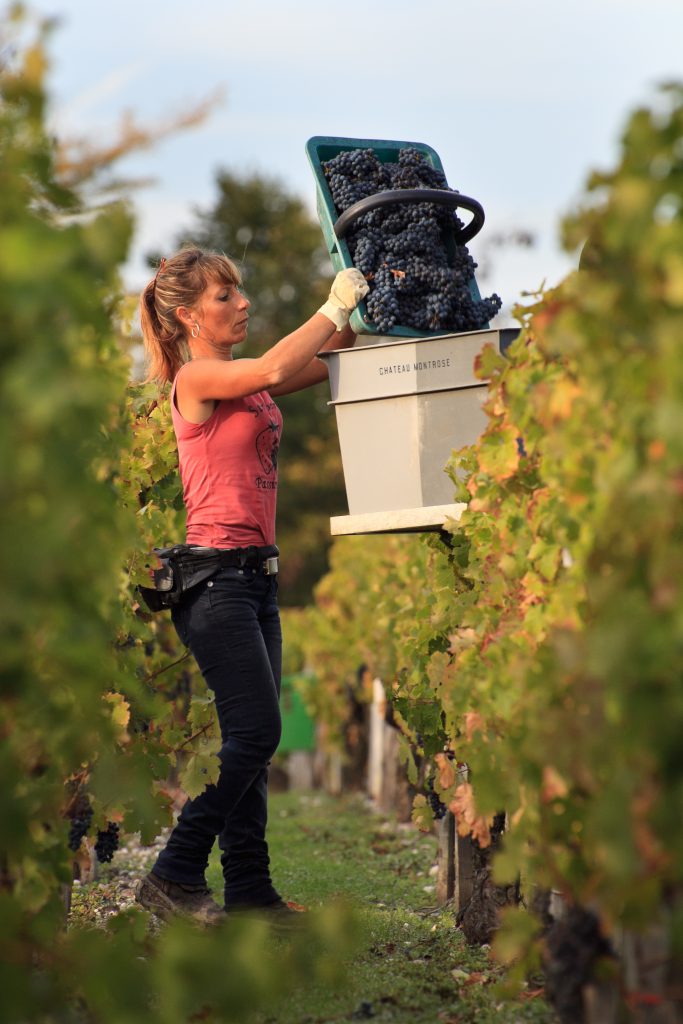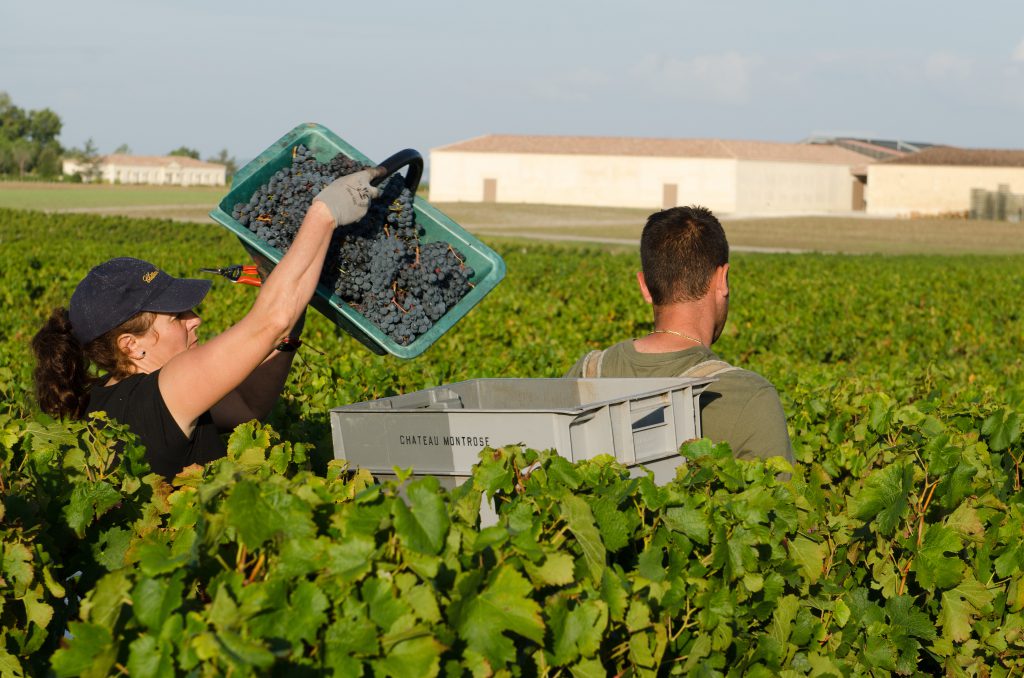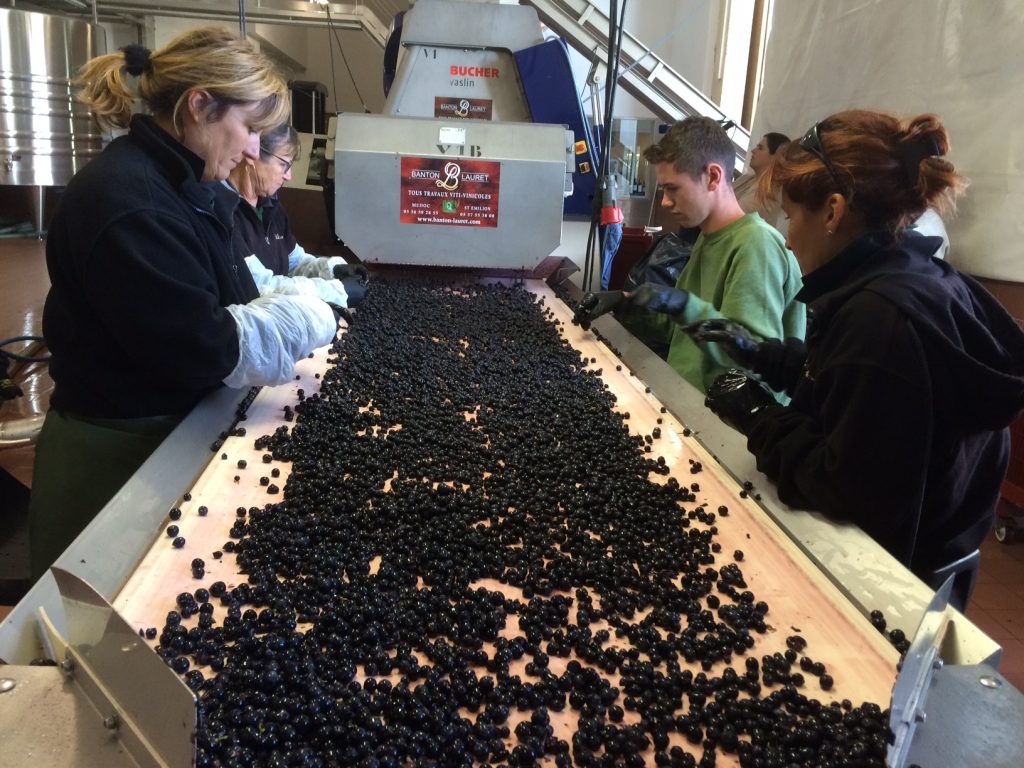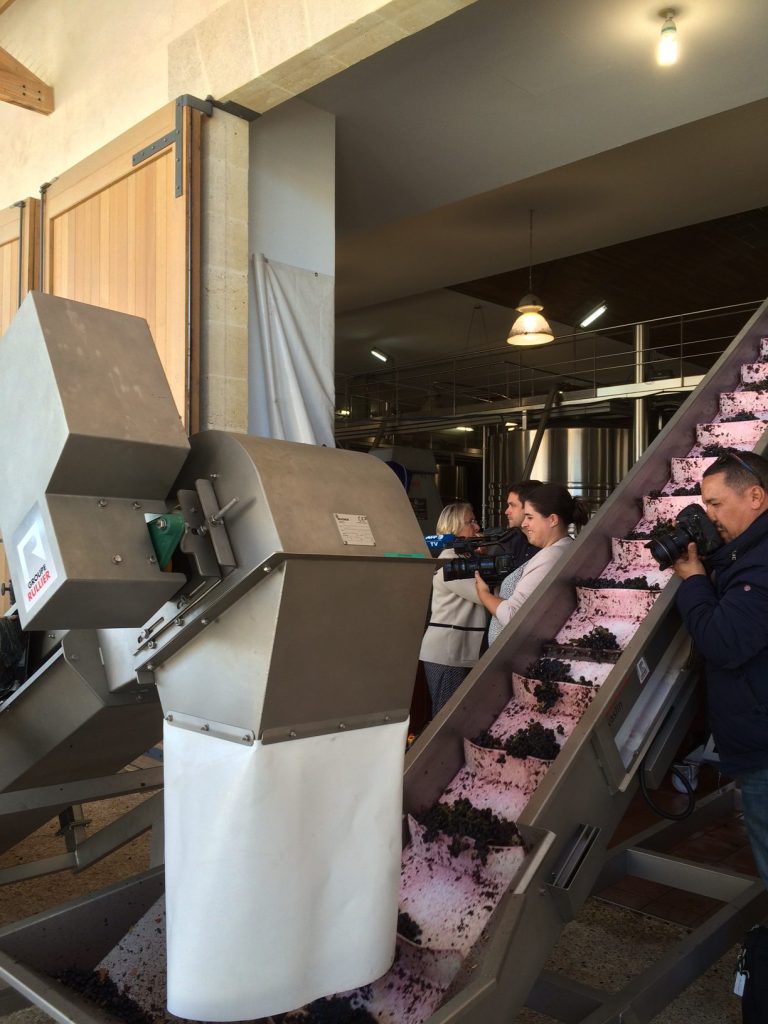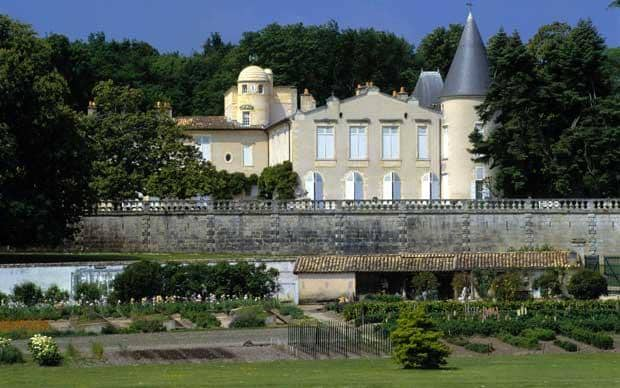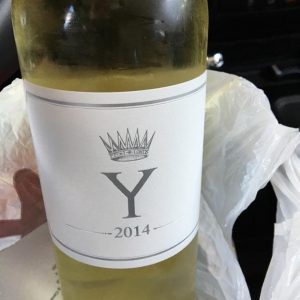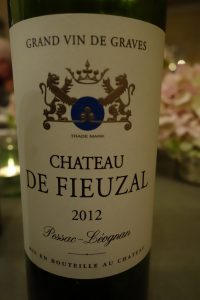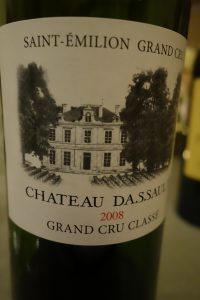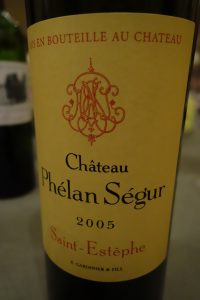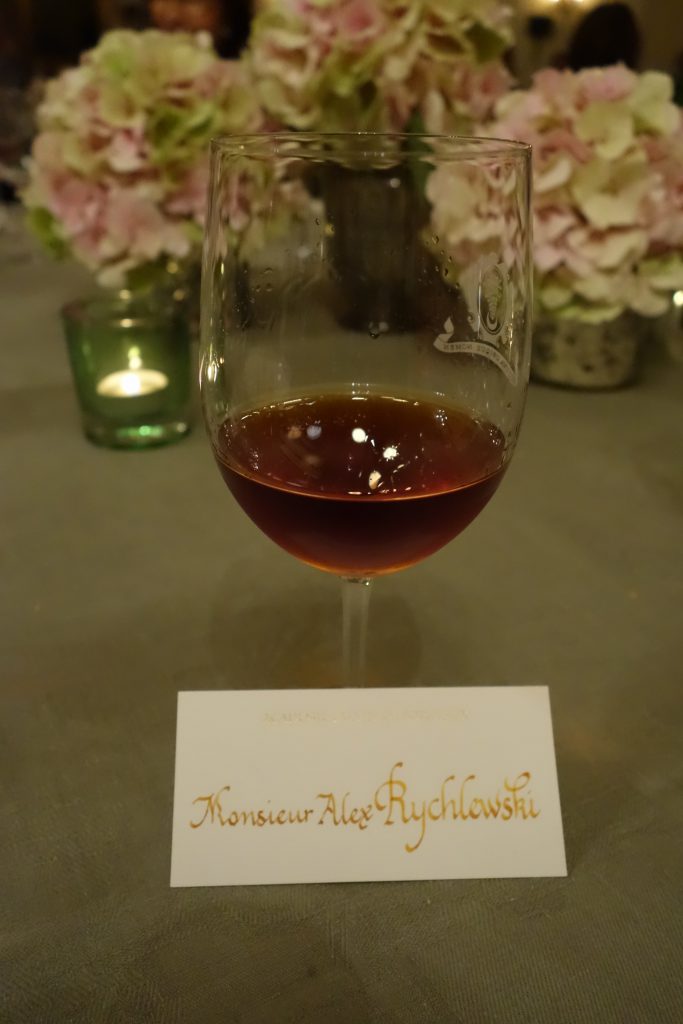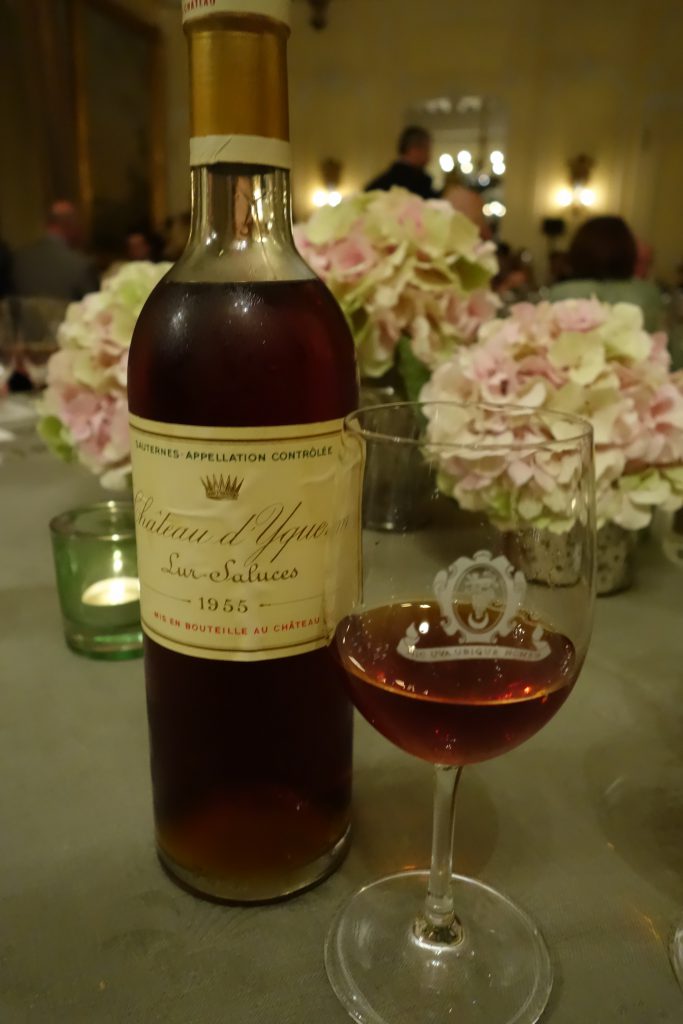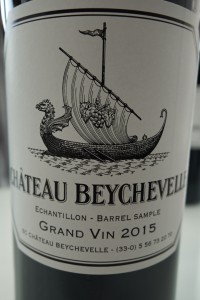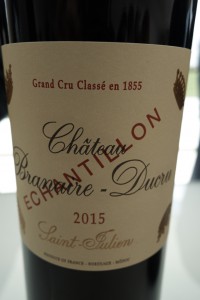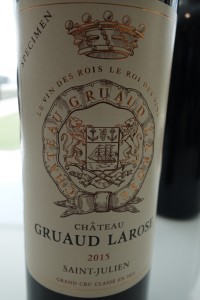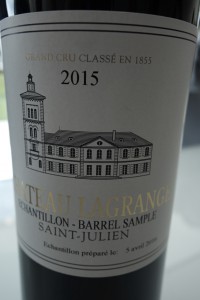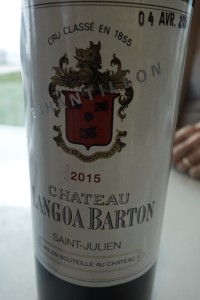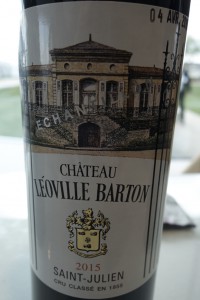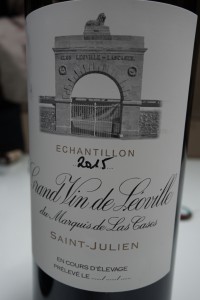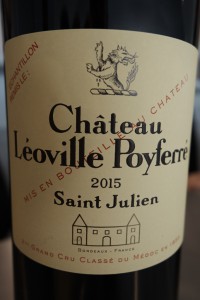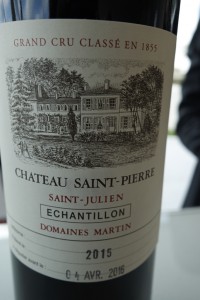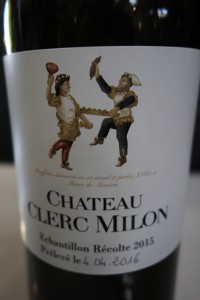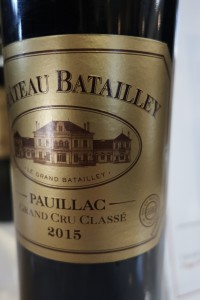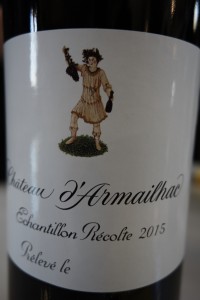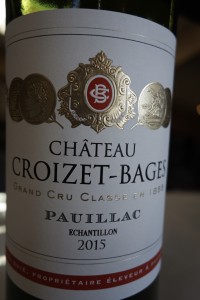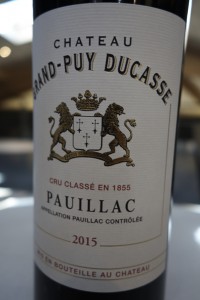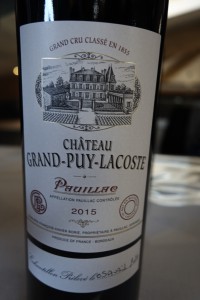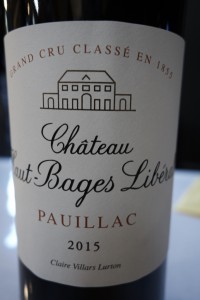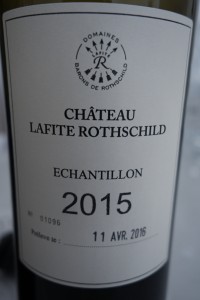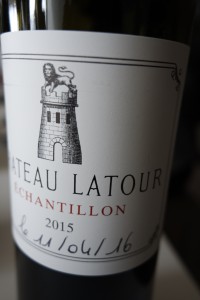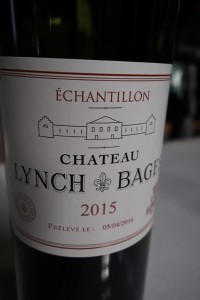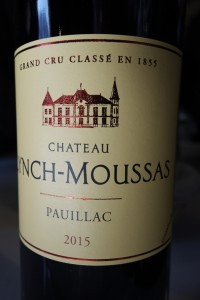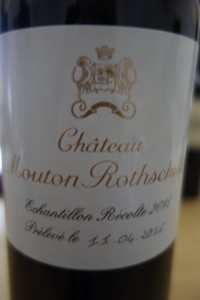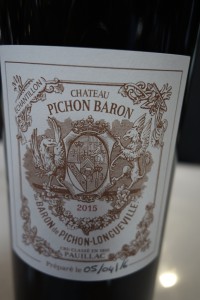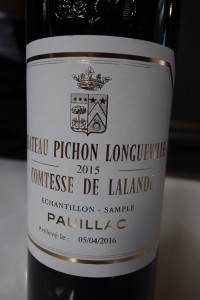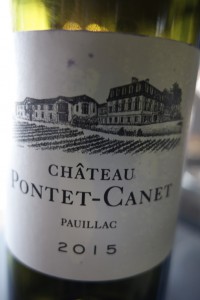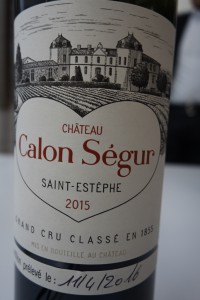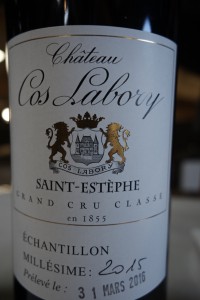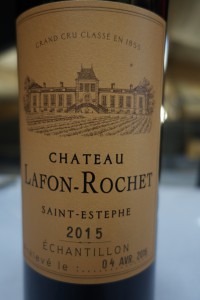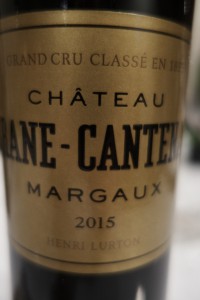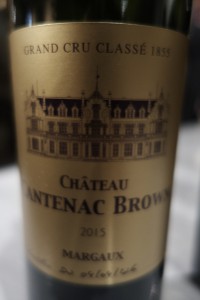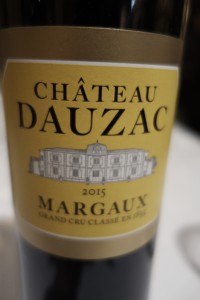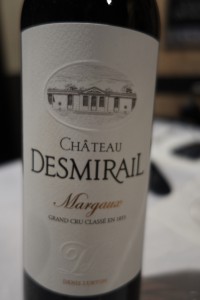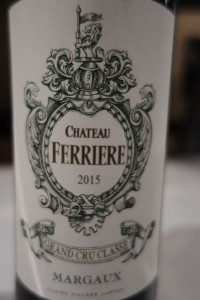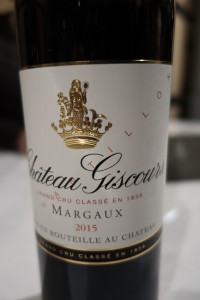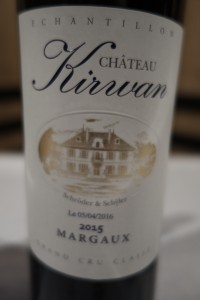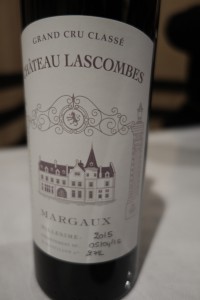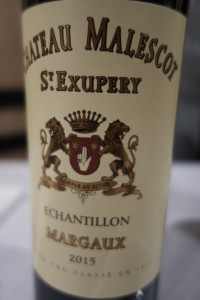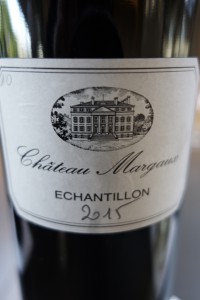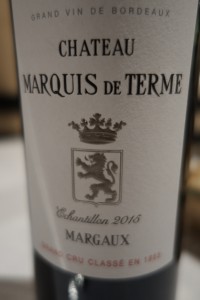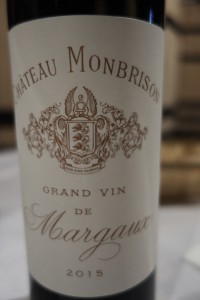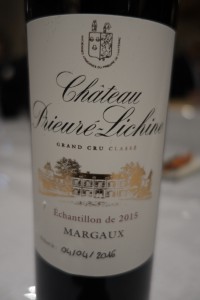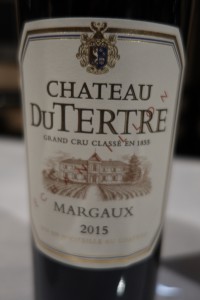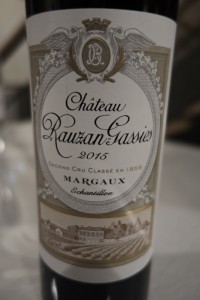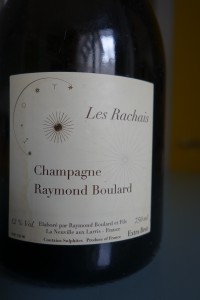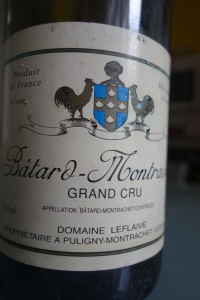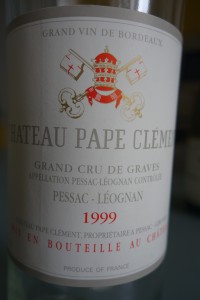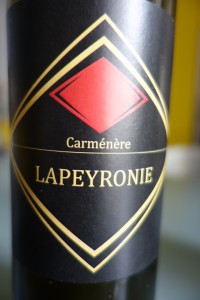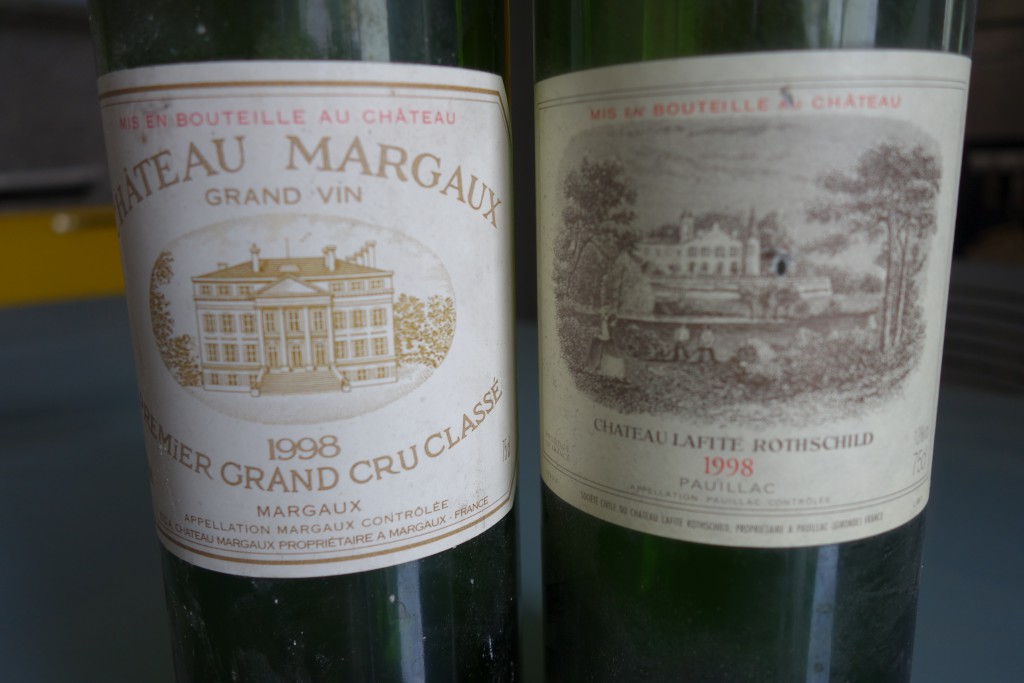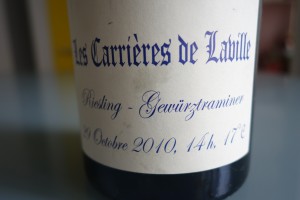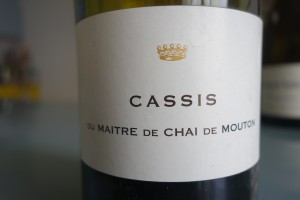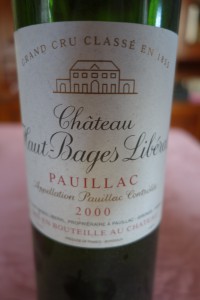SAINT JULIEN
Beychevelle
42% Cabernet Sauvignon, 47% Merlot, 7% Cabernet Franc, and 4% Petit Verdot
N: sweet, with olive nuances, cosmetic overtones and primary fruit showing. Good underlying depth. My notes say “serious and mysterious”.
P: very forward. Big, but not too big. Blackcurrant and fruit paste flavors, and develops very well on the palate. Classic.
Branaire Ducru
65% Cabernet Sauvignon, 26% Merlot, 4% Cabernet Franc, and 5% Petit Verdot
N: fine, assertive, a little dusty. Somewhat one-dimensional and a touch green, with resin and menthol notes.
P: mouthfilling, but somewhat lacking in weight and richness. Good acidity. Very Cabernet and medium-light. Nice sweetness on finish but not very long.
Gruaud Larose
60% Cabernet Sauvignon, 31% Merlot, and 9 % Cabernet Franc
N: closed with some mint-eucalyptus notes
P: not showing well at the present time. Alcohol and tannin dominate. Hard finish. Needs to be revisited later on.
Lagrange
75% Cabernet Sauvignon, 17% Merlot, and 8% Petit Verdot
N: interesting, subtle, and a touch grassy, with black fruit liqueur and vanilla overtones. Promising.
P: heavy mouth feel. Starts out soft and then somewhat disjointed. Slightly hot aftertaste. Needs to be retasted at a later date because not showing well now.
Langoa Barton
54% Cabernet Sauvignon, 38% Merlot, and 8 % Cabernet Franc
N: winery aromas along with sweet subtle fruit. Notes of blueberry and coffee, but not very complex at this stage
P: amazingly soft, round, and sensual with a juicy tang. Winner.
Léoville Barton
86% Cabernet Sauvignon and 14% Merlot
N: very closed, but with some underlying mint, blackcurrant, and toffee.
P: more open on the palate. Big, penetrating, and loads of black fruit flavours. Long and authoritative. Very fine indeed.
Léoville Las Cases
85% Cabernet Sauvignon, 6% Merlot, and 9% Cabernet Franc
N: underlying fruit just emerging
P: considerable weight on the palate. Big, rich, and delicious with the classic blackcurrant flavors of this terroir. Develops beautifully on the palate with a zingy aftertaste. Very good, but perhaps not great.
I tasted the other wines from the Delon stable and particularly liked 2015 Potensac.
Also, 2015 is the first year that a second wine of Clos du Marquis – La Petite Marquise – was produced.
Léoville Poyferré
65% Cabernet Sauvignon, 26% Merlot, 3% Cabernet Franc, and 6% Petit Verdot
N: Powerful, inky, very Cabernet and rich, with jammy and medicinal overtones. The bouquet is confused at the moment and needs time.
P: Starts off rich and soft, going on to reveal tight a tight tannic structure and plenty of backbone. Unabashedly tannic on finish. Once could resume the taste by saying it segues from softness into harshness. The tannin will inevitably enable this wine to age well, but the balance is a little off.
Saint Pierre
75% Cabernet Sauvignon, 19% Merlot, and 6% Cabernet Franc
N: pure and youthful, with exuberant fruit in keeping with the château style. However, this is the antithesis of a fruit bomb. A little green, a little cosmetic, and there may have been a touch of acetic acid.
P: fluid, tangy, bright, and satisfying, with new oak on the finish. Great wine for mid-term drinking.
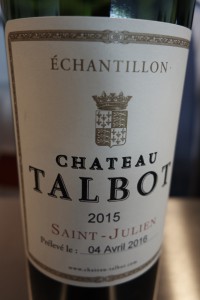
Talbot
66% Cabernet Sauvignon, 31% Merlot, and 3% Petit Verdot
N: bit withdrawn, but with underlying dark fruit
P: chewy and rich, but short. Good acidity, but this does not lead towards a long aftertaste, which is nevertheless fruity. The wine seems to lack overall richness and body at this stage.
PAUILLAC
d’Armailhac
60% Cabernet Sauvignon, 29% Merlot, 9% Cabernet Franc, and 2% Petit Verdot
N: just fine with hints of cherry
P: big, mouthfilling, textbook Pauillac but lacks weight despite its richness. New oak predominates on the finish. Not quite the same class as Clerc Milon.
Batailley
77% Cabernet Sauvignon, 20% Merlot, and 3% Petit Verdot
N: discreet sweet, typical Pauillac nose of medium intensity
P: Big, melts in the mouth with ripe fruit. Only a lack of depth and length keep it out of the top flight category. Lots of new oak, let’s hope they make sure to tone it down during ageing. Well-balanced, although not as complex as the Lynch Moussas.
Clerc Milon
51% Cabernet Sauvignon, 34% Merlot, 13% Cabernet Franc, 1% Petit Verdot, and 1% Carménère
N: sweet black fruit and cranberry overtones, crushed blackcurrant leaves
P: lovely, rich, full, straightforward, and long. A real crowd pleaser.
Croizet Bages
73% Cabernet Sauvignon, 27% Merlot
N: forthright, pure, and open with some hints of black fruit jelly
P: very tart as well as weak and watery on the palate. Simple fruit juice flavors. I really wish I could be more positive for this consistently disappointing wine.
Grand Puy Ducasse
63% Cabernet Sauvignon, 37% Merlot
N: discreet, in fact overly so
P: much better on the palate with a velvety texture and good tannin on the aftertaste. This estate is doing better.
Grand Puy Lacoste
74% Cabernet Sauvignon, 23% Merlot, and 3% Cabernet Franc
N: deep, seductive, brambly and black fruit bouquet. Very promising.
P: round, medium-light and seemingly slightly diluted. Not overdone in any way. Tart, refreshing acidity. A thirst-quenching sort of wine for people who like elegant,digestible Bordeaux. Very good.
Haut Bages Libéral
65% Cabernet Sauvignon and 35% Merlot
N: sweet and simple with a touch of greenness and ash
P: fluid texture and on the light side but picks up on the surprisingly long, attractive finish. One to watch out for.
Lafite Rothschild
91% Cabernet Sauvignon et 9% Merlot
N: delicate and feminine, very much in the château style with cedar and floral nuances giving way to subtle Cabernet fruitiness.
P: 2015 Lafite proves that not just Merlot has tannin that melts in the mouth! The wine deploys its charms with great finesse. The body is on the light side and seemingly low in alcohol. More a satiny than a velvety texture. Very fine.
Latour
97.1% Cabernet Sauvignon, 2.6% Merlot, and 0.03% Petit Verdot
N: relatively closed, with some menthol overtones
P: big, chunky, and penetrating with all the hallmarks of the château. Unrelenting progression of flavors into a zippy, tremendously long aftertaste. Super concentrated, but also elegant. Huge ageing potential.
The second and third wines were also good. As well as wines from the most recent vintage, Latour served 2010 Pauillac, 2009 Les Forts de Latour, and 2000 Latour to en primeur tasters. Not that Les Forts were in any way disappointing, but both the 2015 and 2010 vintages of the Pauillac “over-performed” and represent excellent value for money.
Lynch Bages
70% Cabernet Sauvignon, 24% Merlot, 4% Cabernet Franc, and 2% Petit Verdot
N: very deep with strong blackcurrant and a little clove on the nose
P: medium-heavy mouth feel. Certainly round and attractive, but overwhelmed by the oak at this stage. A wine made to last, but need to be re-tasted at a later date.
Lynch Moussas
75% Cabernet Sauvignon and 25% Merlot
N: nice balance between sweet fruit and oak, nuances of spring flowers
P: stalwart with medium-heavy mouth feel. Fairly assertive with good long aftertaste showing candied black fruit and new oak. Very good. Sleeper.
Mouton Rothschild
82% Cabernet Sauvignon, 16% Merlot, and 2% Cabernet Franc
N: some talcum powder and beeswax on the monumental nose. Virile, deep, and promising.
P: Rich and big on the palate. As good as the bouquet is, the flavors are even better, including some olive nuances. Great velvety texture, balance, and a long aftertaste. The absolute epitome of Cabernet Sauvignon. Radically different from Lafite tasted just one hour previous because this is – comparatively speaking – a bruiser. Regal. Wonderful.
Pichon Baron
77% Cabernet Sauvignon and 23% Merlot
N: lovely characteristic black fruit (especially blackcurrant) along with biscuity and brambly nuances
P: pure and fresh. Great balance and texture, length and grip. Beats the Comtesse and the best Pauillac at the UGC tasting.
Pichon Comtesse
68% Cabernet Sauvignon, 29% Merlot, 2% Cabernet Franc, and 1% Petit Verdot
N: coffee/vanilla with sweet pure fruit. Lacks complexity at this point and is a little spirity.
P: beautiful feminine Pauillac that stops just short of great because the requisite volume is just not there. Nevertheless round and attractive with a tangy tea tannin on the finish.
Pontet Canet
65% Cabernet Sauvignon, 30% Merlot, 3% Cabernet Franc, and 2% Petit Verdot
N: sweet and captivating with some floral overtones (iris)
P: not as easygoing on the palate as the nose suggests. Great balance between roundness and backbone. Restrained. Classic, with very pure fruit. Wonderful transition from softness to long mineral aftertaste.
SAINT ESTEPHE
Calon Ségur
82% Cabernet Sauvignon, 16% Merlot, and 2% Petit Verdot
N: sweet, spirit (but discreetly so), and chocolatey
P: melts in the mouth. Sleek, rich, and no off-putting hard-ass tannin whatsoever. Great acidity but inconclusive impressions on the aftertaste. Give it time to judge accurately. Big changes at this estate showing through.
Cos Labory
55% Cabernet Sauvignon, 41% Merlot, and 4% Petit Verdot
N: not very expressive
P: juicy and starts out soft, then goes on to show slightly harsh, but not outright rough on the palate. Good length and some gumminess on the aftertaste. Better than I have known this château in the past.
Lafon Rochet
55% Cabernet Sauvignon, 40% Merlot, 3% Cabernet Franc, and 2% Petit Verdot
N: rather closed, but with subtle vanilla and fruity notes
P: tight, tangy, balanced, with great black fruit flavors and good grip and length. Nothing to excess. A class act. Lacks richness, but this will probably come with age.
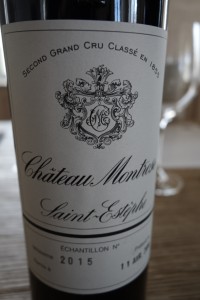
Montrose
67% Cabernet Sauvignon, 29% Merlot, and 4% Cabernet Franc
N: Bright, open, chocolate overtones, very promising
P: Big wine. Overtones of sour fruit, with finely-grained tannin and definite minerality, but harder than Pontet Canet tasted just before. Silky long finish. Wine of character.

